Be astonished by the amazing marine life seen here! The seagrass meadows are very similar to those at Chek Jawa.
Come visit them for yourself during the upcoming evening low spring tides at the end of the year!
What can you see at these Changi shores?
Here's a video of some commonly seen marine life at the seagrass meadows off Changi Carpark 7.
The first animals you are likely to notice are the many small colourful Thorny sea cucumbers and Warty pink sea cucumbers that dot the seagrass meadows. Watch your step to avoid crushing them!
Looking closely, you might see the many different kinds of sea stars that can be found here. These include Knobbly sea stars small and larger than your hand. Sometimes, also large Eight-armed sea stars, pretty Painted sand stars, and cute Biscuit sea stars. Don't pick up sea stars as they can purposely break off their arms if they feel threatened. There may also be many White sea urchins, although they are well hidden under bits of shells, seaweeds and litter that they purposely carry. So please watch your step to avoid crunching these delicate animals to death.
Just like at Chek Jawa, there are usually many Haddon's carpet anemones at Changi. They are usually found near the low water mark and thus only seen at a very low tide. Sometimes, you might see living in them, the large Peacock anemone shrimps (usually seen in a pair of male and female), or many Tiny carpet anemone shrimps which are a different kind of shrimp and not the babies of the Peacock anemone shrimp. The Tiger sea anemone is only abundant on Changi, and not even common on Chek Jawa or elsewhere in Singapore. This sea anemone has red 'pimples' on its body column so it sometimes looks like a strawberry! Swimming sea anemones can also be seasonally common here - these anemones can actually swim by flailing their tentacles. Anemones are relatives of jellyfish so they can sting. Don't touch them.
Changi is also home to colourful snails and slugs. The large and
beautiful Noble volute is often seen here, hunting for buried clams. The Pink moon snail is also a predator! On Changi, you can sometimes see nudibranchs, like
the Bornella nudibranch as well as the Armina nudibranch which eats sea pens! As well as other kinds of sea slugs like
the Batik sea slug.
If you look carefully, you might spot
dugong feeding trails! Seagrass
is the dugong's main food. So not surprisingly, it is also sometimes called the
Sea Cow! It pulls out a mouthful of seagrasses with its thick lips, shakes it to
get rid of the sand and then swallows. Dugong feeding trails are formed when dugongs chomp up seagrasses including their roots, leaving a shallow meandering furrow of about equal width and depth.
These trails are usually found further away from the high shore and thus only just visible at a very low tide.
Guided intertidal walks at Changi
Ideally, it's best to visit a shore with an experienced and trained guide. Why?
See more! Experienced guides are familiar with the terrain and seasons of the shores. They can show you more during the short window of low tide. They can also tell you more about what you see so you can learn more.
Be safe: The shores are not dangerous if you know what you are doing, but for those unfamiliar there are potential hazards. With a professional guide, even young children can interact safely with the shores.
Minimise your impact: Every inch of the shores are alive with small animals and growing plants. An experienced guide will help you see more and yet minimise the impact of your visit.
Have a great time! Guides are eager to ensure you have an enjoyable visit. Whether you are just there to see what's so special about the shores, or if you need more details for a project or have a special area of interest. Do tell your guide, who will gladly try to help you.
Consider joining walks by Young Nautilus who have pre-planned visits and will also gladly organise trips to fit your schedule. More about their public programmes.
If you do want to visit on your own, here's some issues you should take into consideration ...
When is the best time to visit our shores?
Singapore waters tend to be murky and cloudy (like 'kopi susu') because of the high sedimentation. Thus, if you go at high tide, you can't see much. However, just because you can't see something, doesn't mean there is nothing there.
The rich shorelife is more easily seen at low tide. The lower the tide, the larger the expanse of shore exposed and a wider variety of shorelife can be seen.
It's best to visit with the outgoing tide. The water is clearer as the tide falls, and in areas where a calm shallow lagoon forms at low tide, behind a sand bar. The water tends to get murky as the tide turns and water rises and rushes in.
Singapore has two low tides and two high tides a day. The height of the tide is not the same every day. High and low tides do not happen at the same time every day, and the highest and lowest tide level change every day. Tides suitable for a visit to the shore do not necessarily occur on a weekend. Suitable tides usually fall before sunrise and after sunset. There are few suitable tides during daylight hours.
Here's more about the tides: what causes them, and about Singapore's tides.
How low should the tide be to see something at Changi?
The lower the tide, the more of the shore is exposed! Some of the sandy shores near Changi Carpark 6 can be explored at tides of 0.4m and above for Changi tide tables (as in the photo below).
But much lower tides are needed to view the seagrass meadows near Changi Carpark 7. Only a narrow portion of the meadows are exposed at a tide of about 0.2m for Changi tide tables (as in the photo below).
At tides 0.1m and below, a wider expanse of shore is exposed (as in the photo below). But usually for only a brief period of about half an hour to an hour. So you need to be punctual!
Such low spring tides tend to occur near or after sunset at this time of the
year. The marinas based at Changi provide on their website, the hour-by-hour predicted tides for Changi. Links to
these and more about Singapore's tides here.
Safety on the shore!
Comply with all prevailing COVID regulations. Visit the NParks SafeDistance website to check on the current crowding at the location, and for the latest COVID regulations.
Lighting and rain: Immediately evacuate to one of the park shelters at the first signs of the weather turning bad. Lightning can occur without rain. Get the latest weather situation here: radar readings updated every 10 mins.
If we are not careful, we can cause damage to the shore when we visit. Be gentle when you visit. Watch your step. Avoid wading into deeper murky waters as you won't be able to see what you are stepping on. Don't poke animals or dig them up or bring them home. Take only photos. Safety on the shore!
Comply with all prevailing COVID regulations. Visit the NParks SafeDistance website to check on the current crowding at the location, and for the latest COVID regulations.
Lighting and rain: Immediately evacuate to one of the park shelters at the first signs of the weather turning bad. Lightning can occur without rain. Get the latest weather situation here: radar readings updated every 10 mins.
Don't touch! All animals defend themselves from predators or they will be eaten
up and soon become extinct. Some of these animal defences can cause humans
irritation, pain or even worse injuries and death. As with any nature walk,
it is important to respect the wildlife: do not touch animals, don't poke
them, leave them alone. Cover all skin that can be exposed to the water;
wear covered shoes. Do not walk on bare feet. Closely supervise young
children who may accidentally touch animals, then rub their eyes or put
fingers into the mouth.
At the same time, our visit also affects the safety of the shores. Our shores
are fragile. Many small sea creatures live in the sand and mud. These are
killed when we step on them, no matter how gently we walk. These small sea
creatures form the base of the entire food chain on our shores. Seagrass
have delicate roots and take a long time to recover when trampled
on.
Sharing your photos is one way to give back for the damage you cause to the shore. No matter how careful you are, you will cause some damage.
MORE tips for safety on our shores and FAQs about shore visits.
Links to more
Latest on Changi Beach Park on the NParks website.
More about Changi shores in surveys done for more than ten years.
This post first appeared on the wild shores of singapore blog.

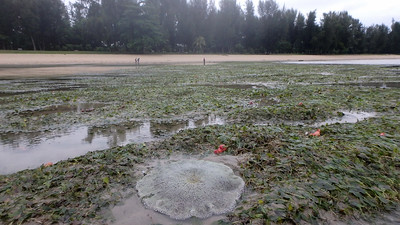

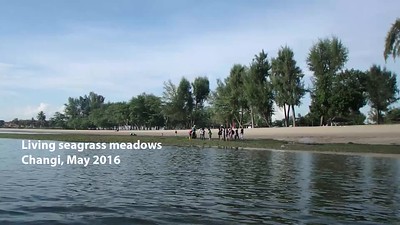
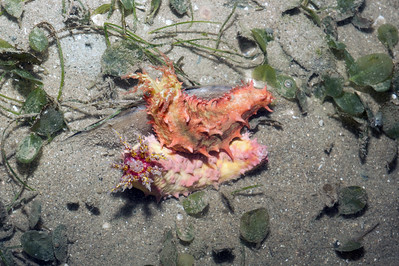




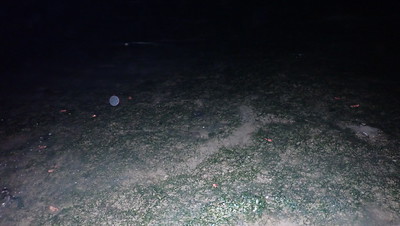
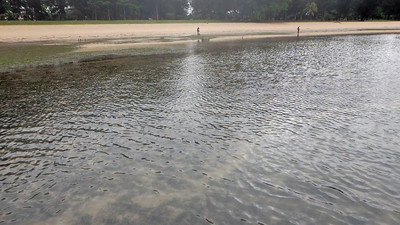




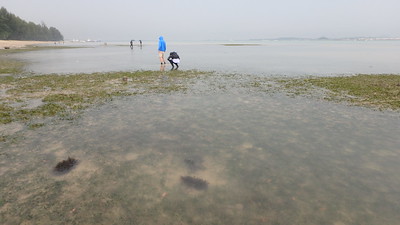


No comments:
Post a Comment